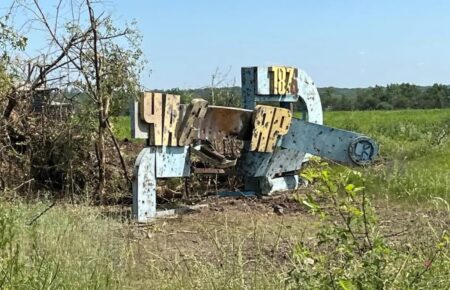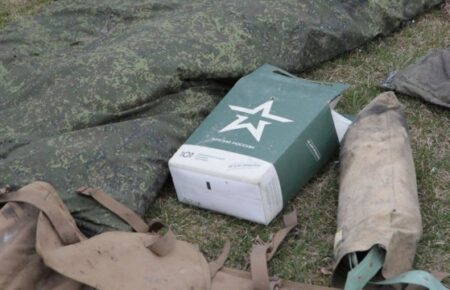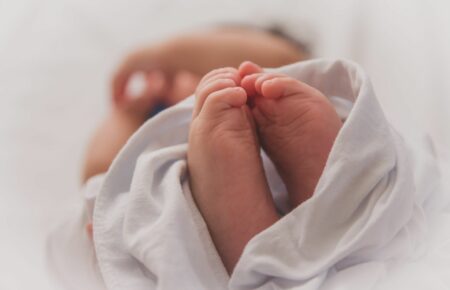
Russian agression, civilians casualties and determination of genocide: interview with Kris Janowski
The UN Human Rights Monitoring Mission has released a report on the second anniversary of Russia’s full-scale invasion of Ukraine. The report addresses the number of civilian casualties resulting from Russia’s war in Ukraine over the past two years.
We will discuss this further with Kris Janowski, spokesperson for the UN Human Rights Monitoring Mission in Ukraine.
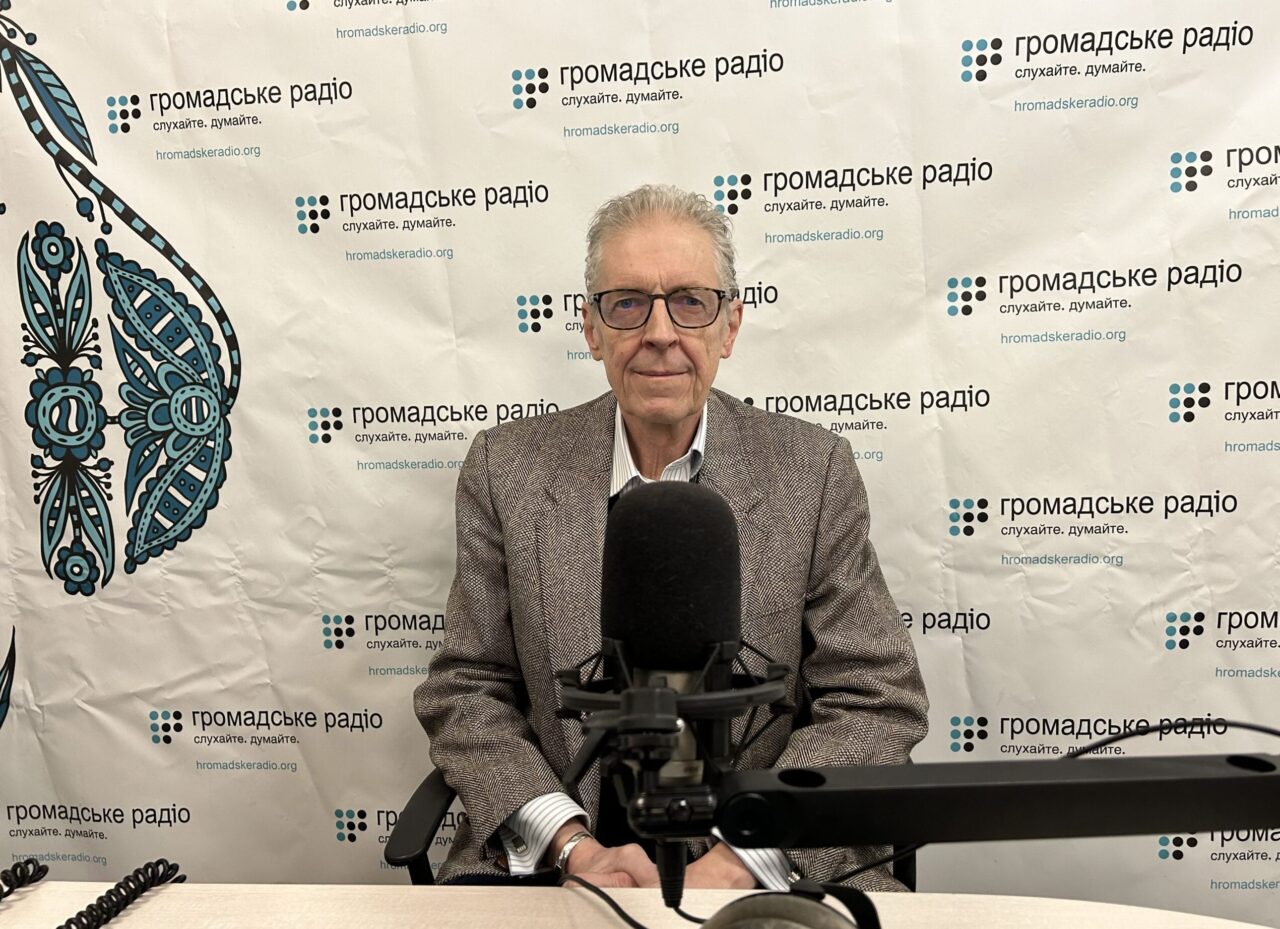 Kris Janowski, the spokesperson for the UN Human Rights Monitoring Mission in Ukraine/Photo by Hromadske Radio
Kris Janowski, the spokesperson for the UN Human Rights Monitoring Mission in Ukraine/Photo by Hromadske Radio
According to the report, since February 24, 2022, at least 10,500 civilians have been killed, and nearly 20,000 others have been injured in the full-scale war in Ukraine.
Iryna Sampan: I would like to ask you, Mr. Kris, how this data was collected and what the main points drawn from this report. Additionally, who are the civilians most at risk?
Kris Janowski: Well, the process of collecting information is quite long and painstaking. And I have to say of course our official figures say that more than 10,000 people have been killed and nearly 20,000 who have been wounded, but the real figures probably much higher than that.
There are certain areas of Ukraine to which we have had no access, including Mariupol for example, where there were heavy casualties and some of the most intense military activity. Yet we have not been able to go there and verify the casualties, so we always say that our figures are actually probably quite low in comparison with the real figure which is much higher.
Now we get our information from multiple sources. We of course get the open sources the initial reports about casualties, how many people were killed right after it happened. Then we verify this information, we speak to a number of people, we speak to hospitals, we speak to local officials, we speak to officials who are in charge of the morgue, we cross reference witness testimonies, eyewitness testimonies, we speak to relatives.
So, only then after we have checked multiple sources, we can actually for certain or with reasonable certainty say that somebody has been killed. And this is how we arrive at our figures, and that’s why we believe that our figures are actually quite accurate. With one caution of course that there are certain areas where we have not been able to go and there may be people who were most certainly killed in those areas. We don’t even know about that.
- To answer the second part of your question: who is the most exposed, all civilians are actually exposed in a war. But we have seen certain trends since the all-out Russian invasion two years ago. Of course the most casualties occurred in the first weeks of the Invasion right after the invaded the most civilians died. And in general most of the casualties, over 90%, are caused by artillery, missile attacks, drone attacks, essentially highly explosive weapons which kill and wound people, you know in a fairly wide range. So this is what has been killing people in the most I would say lethal way.
- Of course there have been other situations such as Bucha for example where people were executed by the occupying forces. As you can see from our figures, men account for more of the casualties than women. And here the reason is that men often stayed closer to the frontline for longer. So, women and children would evacuate, would move away from the frontline and men would stay in more dangerous areas and this is probably ultimately why the men are more exposed.
But you know in a war of this kind where the Russians attack not just in the frontline areas but they attack Lviv, attack places in western Ukraine, so anybody is exposed. There’s not a place in Ukraine which is immune from these attacks. If you use drones and ballistic missiles they can hit anybody anywhere.
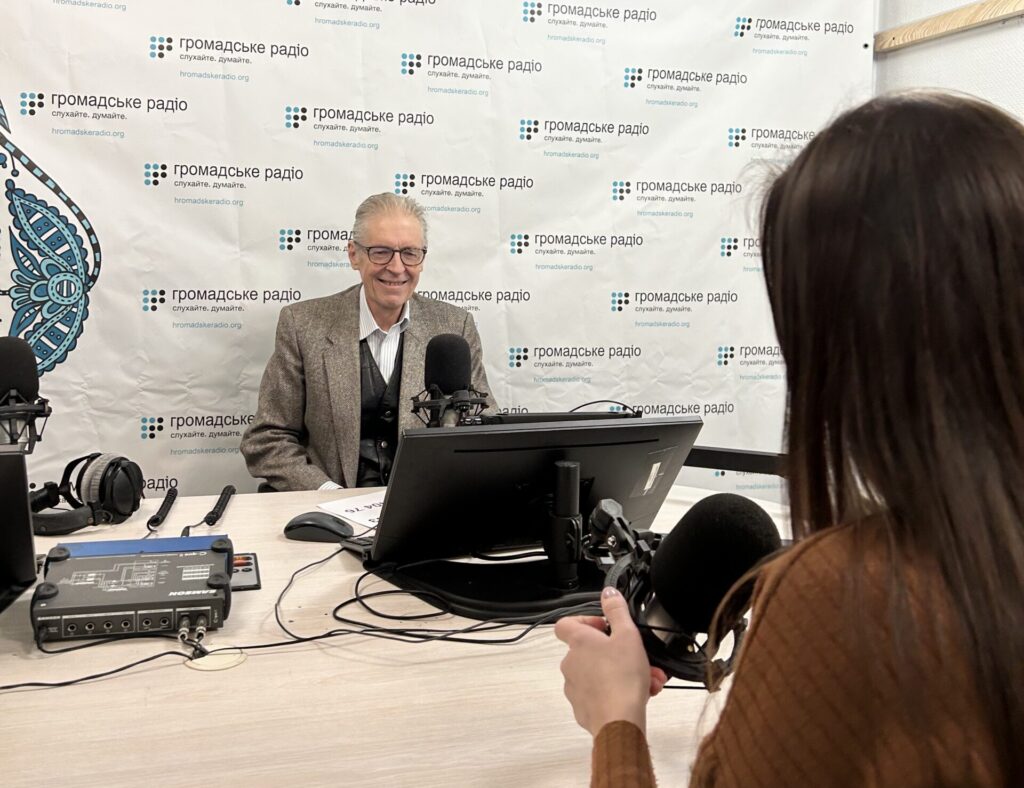
Iryna Sampan: You mentioned Bucha, and I certainly want to delve into that. I understand that discussing the genocide in Ukraine, in Europe, within international institutions is highly sensitive. Therefore, could you clarify the position of the UN monitoring mission on these specific cases, including the events in Bucha, Irpin, Borodyanka, and Izium? Similarly, regarding the explosion of the Kakhovka hydroelectric power station and the shelling of the village of Groza in the Kharkiv region during a funeral, does the UN monitoring mission have a defined stance on these incidents? To what extent are these cases considered as potential instances of genocide?
Kris Janowski: We cannot make a determination of genocide. This would have to be done by an international tribunal, by a special body. What we can say, we cannot even make a determination whether something is a war crime or not, because this can be determined only by a court. What we can say is what we see, what we can document certain things and we can say and we do say it in our reports, that certain actions that we have seen, certain attacks on civilians, cases of targeting of civilians, deliberate targeting of civilians, certain cases of execution of prisoners of war, execution of civilians, arbitrary detention and so on and so forth. So, certain actions committed here in Ukraine can be… could be classified as war crimes, but only a court can make an actual determination whether something is a war crime or not. We can describe what we see and we can express the opinion that we think that some of these behaviours, some of these actions could constitute war crimes but we cannot make the final determination.
And of course we hope that our work will eventually lead to accountability. That what we… our findings, the acts that we have documented and crimes that we have documented, that our reports will be used by… eventually by tribunals, which will determine responsibility and, hopefully, punish those responsible. So, we do hope that of course what we do will contribute to accountability, but we ourselves are not a court.
Iryna Sampan: This was actually my next question. How the data collected by the UN human rights monitoring mission can aid in bringing Russian criminals to justice in international courts or future tribunals. Do you have a mechanism in place for transferring this data? For instance, in the case of Bucha, do you facilitate its transfer, or do you simply publish it openly for anyone to access?
Kris Janowski: Every… all our findings become public. They are… essentially our reports are public. The way it’s done: we draft a report, with everything that we know and this report in then sent to the Ukrainian… because our organisation is based in Geneva, the Office of the High commissioner… UN high commissioner for human rights is in Geneva, we share these reports first with the Ukrainian mission to the UN in Geneva and with the Russian mission to the UN in Geneva for comments. And then, when we receive their comments, we do a final draft and the report is published, becomes public. And it becomes… it’s a matter of public record. And our reports are often cited by other organisations, mentioned by other organisations in their reports. And of course, because these reports are public, they are a matter of public record, they will be used eventually in possible court proceedings regarding the responsibility for what happened here in Ukraine. Our reports will be used and hopefully will contribute to responsibility in the sense that… accountability in the sense that we hope that those responsible for attacks on civilians, murder, arbitrary detention, executions and so on and so forth that these people will be brought to justice at some point.
Iryna Sampan: Was the mission involved in bringing Putin to justice specifically for the deportation of Ukrainian children? And why was this case the most successful in terms of international law compared to all other war crimes?
Kris Janowski: Well, we have some, we have documented some cases of Ukrainian children being taken either moved within occupied… to the occupied areas or other places that are occupied by Russia or even moved to Russia proper, to Russian territory. And we don’t know the real scale of the problem. We know of certain cases of a few hundred cases, but there are probably many more cases, that’s why we have not… it’s difficult for us to speak about the problem globally, because we don’t know how many cases there are.
- There could be many many more that we are not aware of. Often it’s a situation where this happened under Russian occupation. The Russian forces came in and took the children away. Of course we often have no witnesses, we have no way of verifying what actually happened because we have no access. This one of the problems is that we have no access whatsoever to occupied territory and we cannot, we don’t have a mandate to work in Russia so our ability to understand what happened to the children and on what scale is very limited basically.
The cases we do have are quite alarming, of children who have been taken away and moved within occupied territory. This is permissible under international humanitarian law only in very exceptional circumstances, when there is an immediate danger, the occupying power can actually move civilians or children to a different location, because there is an immediate military danger. But in any other circumstances it will be a violation. But again because we have so little access it is very difficult for us to give a good picture of what actually happened.
Iryna Sampan: So, in relation to the mandate for working in Russia, have you attempted to work there or gain access in any manner? You don’t have a mandate because they don’t permit it, or is it because the head office doesn’t authorise you to work there?
Kris Janowski: Well, our mandate is limited to Ukraine. We are the UN human rights monitoring mission in Ukraine. So we should have access to areas occupied by Russia, which are of course part of Ukraine, but the Russians, when we have demanded and ask for access on multiple occasions, we constantly request access to areas occupied by Russia. But we have had no access since the big Invasion on February 24, 2022. As far as Russia itself is concerned we don’t have a mandate to work in Russia. So, this is… the only things that we know, what is happening in Russia comes for example from testimonies of Ukrainian prisoners of war, who were taken to Russia and suffered abuse and ill treatment on Russian territory. And this happened on Russian territory and we report about it because part of our mandate is reporting on what happens to the prisoners of war. But otherwise our mandate at the moment is limited to Ukrainian territory, including of course occupied territory, including Crimea, including Donetsk and so on.
Iryna Sampan: In December of last year, the UN General Assembly extended the resolution on civilian hostages. This resolution requires Russia to return all Ukrainian children and ensure their safe return to Ukraine. How does this resolution assist your mission in terms of access or documenting these violations? In other words, does it in any way loosen the constraints on your actions?
Kris Janowski: Well, General Assembly resolutions are generally not binding. In a sense they are very difficult to enforce. And in order for us to be able to work in a country, any country, we need an agreement with the country. And we have an agreement with Ukraine, we have a mandate to work in Ukraine and monitor human rights, and we’ve had one for 10 years now. We actually came here 10 years ago and we look at various aspects of human rights. But we would need if we were to work in Russia in the Russian Federation we would have to have an agreement with Russian Federation. At the moment it doesn’t seem to be very likely. I think your question was about the General Assembly resolution on the return of the children.
Well of course like everybody else we would like Russia to heed and abide by the General Assembly resolution but it hasn’t happened so far. And whether this is going to… it will probably have no effect… immediate effect on our work, because our work to a large extent depends on access. And we are… don’t even have access to the areas of Ukraine that are occupied by Russia.
But you know, at the same time one has to say that the fact that we have no access to occupied territory, doesn’t mean that we are completely blind. We still know what’s happening there because we speak to people, we speak to relatives, we speak to eyewitnesses, so we have a pretty good idea of what is happening in occupied territory. In fact in a few weeks time we will be issuing a special report on occupied territories, what is actually happening there, what sort of impact the Russian occupation has on these areas. We have seen already attempts by the Russian Federation to consolidate their control of occupied areas by introducing Russian court systems by introducing Russian education systems by imposing education in Russian on children and so on and so forth.
So, the occupation authorities are taking steps to consolidate their control. And we’ll be issuing a report on various aspects of the Russian occupation and of course once the report is ready we will share it with you and with others. But it is an important part of our work in our mandate reporting on what is happening in occupied territory, even though we physically do not have access at the moment.
Iryna Sampan: Could you share a brief overview of your findings regarding the current human rights situation in the occupied territories, particularly leading up to Putin’s «elections»? Have there been any notable violations, and has the pressure intensified? Is there a perceived threat to go to the elections, and what specific developments are occurring in the pre-election period?
Kris Janowski: Well, if I understand correctly, i mean, your question whether the Russian elections will have an impact on…
Iryna Sampan: Yeah, what the situation before the «election», Putin’s «election» on the occupied territory.
Kris Janowski: Well it’s impossible for us to tell. I mean we are not monitoring that particular aspect but generally we have seen alarming trends in occupied territories with essentially Russia trying to consolidate its control of occupied territories. And these are actions which are a violation of international humanitarian, international law. The local population in areas occupied by Russia has the right to education on language they speak, their own language. They should not be forced to, you know, there are number of things, that are happening, people are being forced to accept Russian passports, for example, which is the major problem.
And civilians in those areas unless they accept Russian citizenship, they are cut off from pensions, they are cut off from health services, they are cut off from housing, from basically basic services, that enable them to survive. So there’s a lot of pressure on people to accept Russian citizenship and there are many attempts, as far as we know, to essentially for Russia to create a fair complete to consolidate their control of those areas. But we do not have a position on the elections and how the elections may play out in occupied territories.
Iryna Sampan: Lastly, I understand this is a sensitive issue, because there have been some reports from international organisations about «crimes committed by the Ukrainian side», could you provide information on any «crimes committed by the Ukrainian military or security forces»?And we certainly don’t want to resemble Russia in any way, we want to be a democratic country. Does your mission monitor such cases on the Ukrainian side, including the detention of Russian prisoners of war here in Ukraine?
Kris Janowski: Well, of course we are monitoring abuses by both sides. And we have found especially in the treatment and I think this is what you’re asking about in the prisoners of war. We have seen, we have documented ill treatment of Russian prisoners of war by Ukraine. And this happens especially at the moment of capture, when they are captured and when they are held in temporary detention facilities. This is where Russian prisoners of war reported abuse.
Once they actually held in permanent places of internment for prisons of war there the situation is much better, they are not exposed to abuse. And of course one has to say that, and we always say that, and I think it needs to be said, that Russia is ultimately responsible for the war, and Russia is the country that attacked Ukraine in violations of international law. And most of civilian casualties have happened in areas controlled by the Ukrainian government, which means that they happened as a result of Russian shellings, Russian attacks and so on so forth…
… The scale is different and of course ultimately it’s Russia’s responsibility, because Russia is the country that attacked Ukraine. At the same time, Ukraine also has obligations under international law and the fact that Ukraine is a victim of a Russian attack and a victim of aggression does not absolve Ukraine from certain responsibilities under international law, concerning prisons of war, for example. And… but again you know the other difference is and one also for the sake of fairness has to mention it that Ukraine has given us access to Russian prisoners of war, to places of detention without any restrictions. While on the Russian side we have had no access whatsoever.
So, the big difference between Russia and Ukraine is that Ukraine have been actually has been working with us, giving us access, talking to us and cooperating essentially. While Russia refuses to cooperate and we have zero access to Ukrainian prisoners of war, while they are still in detention. Last time we had access to, a very limited access, to a group of Ukrainian prisoners of war was at the very very beginning of the war in sometime in the summer of 2022 and then access was very brief and not full access in the sense that we were not able to confidently speak with them and so on and so forth. So we usually rely, as far as the Ukrainian prisoners of war are concerned, we usually rely on testimonies of people who have been released or exchanged, then they are usually brought to health facility, their health is checked and then eventually we speak to them. And that’s how we get the information. On the Ukrainian side we have access to places of detention where Russian prisoners of war are being held…
Iryna Sampan: So, I thank you for your report, for your work and thank you for coming.
Kris Janowski: We will have a report, it was a periodic report, covering… which will be, you know, we’ll have a chapter about prisons of war in about month, one month’s time. We’ll have an update and we’ll share it with you with the latest findings on prisoners of war on both sides actually.
Iryna Sampan: When this briefly meeting with the Ukrainian prisoners happened this summer?
Kris Janowski: Oh well, that must have been the summer like July of 22 or something.
Iryna Sampan: And where?
Kris Janowski: In the Donetsk area somewhere. And it was very brief and we were not able to confidentially speak with them and since then we have had absolutely no access to occupied territory and we only speak to them, once they bring released and they go through medical, you know, medical tests and so on. And then… only then, you know, and of course they are in a usually, many are in a poor shape, because you know, an overwhelming majority, like over 90% and 99% of them have been tortured and abused in some way.
We virtually have no cases of people who were not tortured, so this gives you an idea of what it’s like to be a prisoners of war, you know, it’s a nightmare basically.
Adapted and transcribed by Eduard Dudka
Editor: Olena Rebryk
